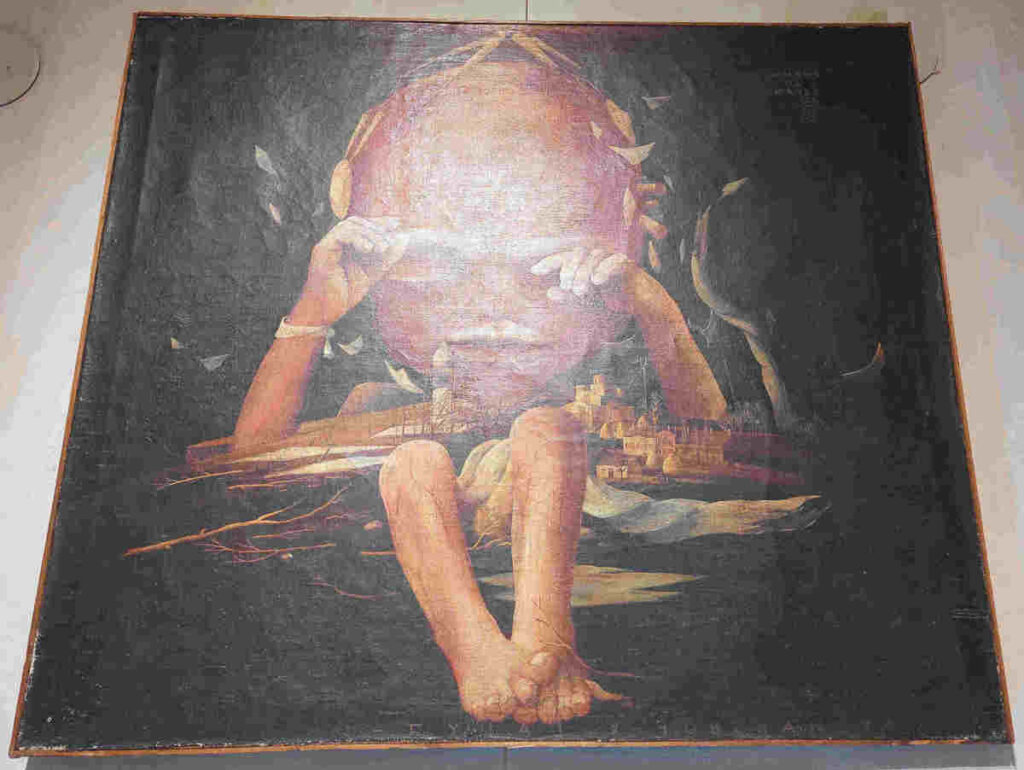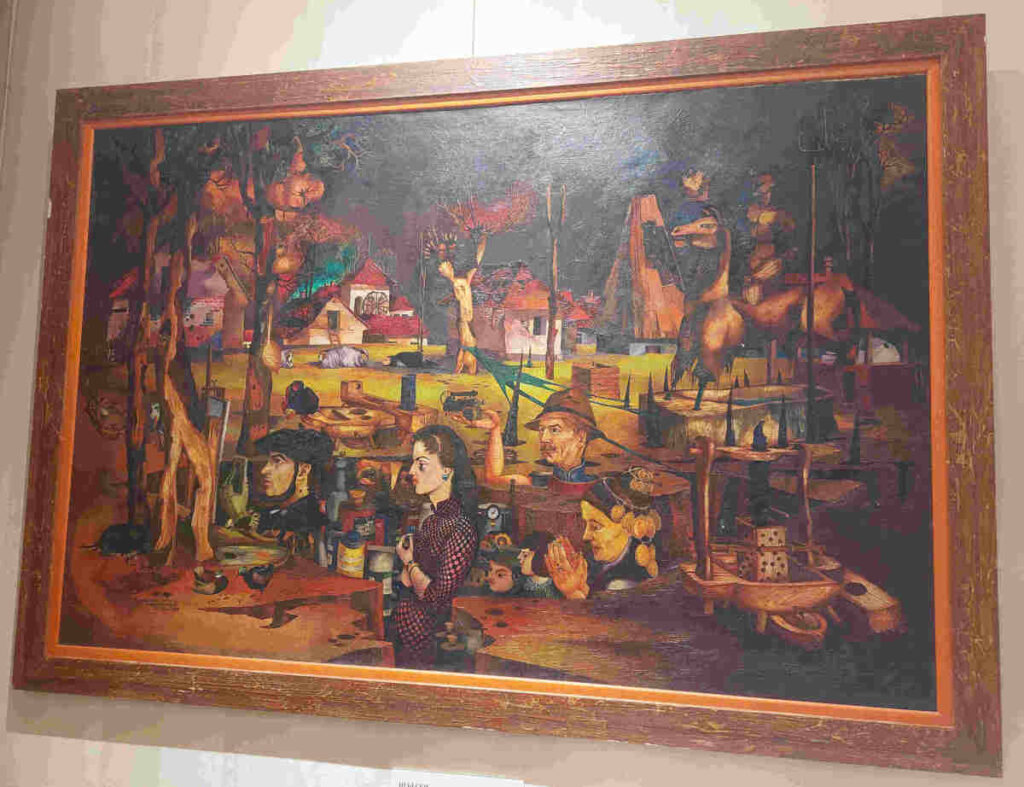
Experience the visionary artistry of Milić of Mačva (1934-2000), a Serbian painter whose surrealistic works have earned him the title of the Serbian Salvador Dali. Step into the exhibition in Belgrade commemorating the first 30 years of his influential career. Join us as we explore the remarkable talent and unique vision of one of Serbia’s most distinguished contemporary painters.
Table of Contents

The Heavenly Milić Exhibition in Belgrade
Commemorating the 90th anniversary of the birth of Milić Stanković, known as Milić of Mačva, the Heavenly Milić Exhibition at the historic Jevrem Grujić House in Belgrade’s city center has captivated the public, leading to its extension due to overwhelming interest.

Often likened to the enigmatic Salvador Dali and the versatile Leonardo da Vinci, Milić’s works are rich in symbolism and layered messages, inviting viewers to delve deeper into their meanings. The exhibition showcases over 60 of Milić’s paintings, alongside personal items, photographs, drawings, and art installations, offering a comprehensive view of his creative journey.

Organized in collaboration with the artist’s family and private collectors, and under the patronage of the Ministry of Culture of the Republic of Serbia, this exhibition features special works that Milić had chosen to keep within his family, rather than sell or donate to museums.
Milić of Mačva Biography
Born in the village of Belotić in the Mačva District, he spent his time playing in the fields, the barn, and the old warehouse, while during the summer, he would swim in the nearby river. He crafted his own toys from everyday objects and pumpkins, showcasing his resourcefulness and creativity. His vivid imagination enriched his leisure time in the countryside, providing him with endless adventures and discoveries.

Milić of Mačva discovered his passion for painting during high school. Despite his early artistic inclinations, his family strongly opposed his desire to pursue painting professionally, to the point that his father even disowned him through a newspaper announcement!

Undeterred, Milic of Mačva remained steadfast in his commitment to art, upholding the Painter’s Oath he made in high school in front of a mirror, declaring, “I have to be a painter. I will be a painter, and I will make a living solely from painting.”
Milić of Mačva was exceptionally well-educated. He graduated at the Academy of Fine Arts and simultaneously studied at the Faculty of Architecture in Belgrade for three years. Known for his commitment to a healthy way of living, he did not have vices and had a strong aversion to laziness and the bohemian lifestyle.

He was married three times and had four daughters. His third wife, Danka, who shared the last thirty years of his life with him, was often portrayed in his paintings as a woman constantly waiting for his return.
He was a controversial figure, known for his strong ideological and political views. His distinctive attire, including the black cape and beret, became iconic and easily recognizable in public. According to his daughter Teodora Stanković, he didn’t engage much in casual conversations but was deeply passionate about three topics: Serbs, communism, and Freemasonry.

Artwork
Milić was a very prolific painter. Throughout his career, he painted around 7,500 paintings, created more than 13,000 graphics, and produced hundreds of icons and frescoes.
Milić of Mačva was known for his extensive knowledge and interest in mythology and the Bible, which often influenced his artistic themes. His works were characterized by their use of symbolic imagery and dreamlike landscapes, often featuring elements such as Biblical figures, dices, flying wood logs, and references to deeply tragic life stories from Serbia’s war-torn past.

Milić’s thought-provoking paintings exhibit exceptional artistic skill, accompanied by rich imaginary narratives that draw from the artist’s profound knowledge. What is particularly fascinating about his work is its multi-layered storytelling. Each painting is teeming with intricate details, offering a wealth of interpretations that vary depending on the viewer’s perspective and the way in which the painting is approached.

His works can be found in prestigious galleries and collections around the world, such as the Uffizi Gallery in Florence, the Vatican Museum in Rome, the History and Art Museum in Geneva, and many other galleries and private collections.
Conclusion
Milic of Mačva’s paintings are a testament to his exceptional talent and unique vision. His surrealistic works, often compared to those of Salvador Dali, are characterized by their rich symbolism and imaginative storytelling. Through his art, Milić captured the essence of Serbian culture and history, while also delving into universal themes of humanity and existence. His legacy lives on through his paintings, which continue to inspire and captivate audiences around the world.


Leave a Reply